Ghana. The Village of the Children.
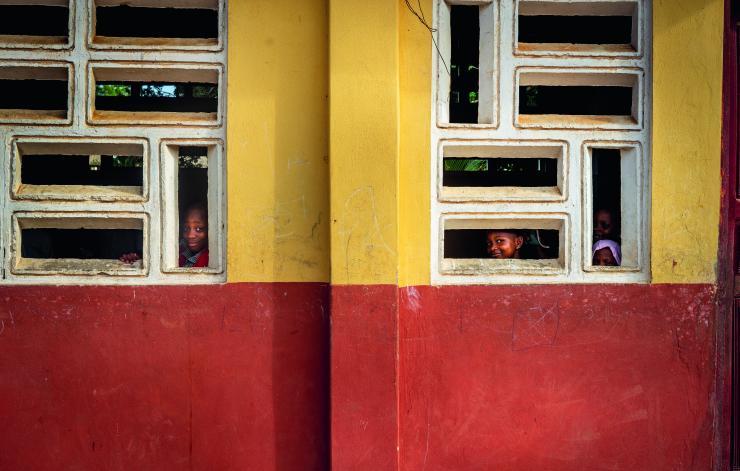
‘In My Father’s House’, a centre for vulnerable children. A school for over 800 pupils. But above all, a place where children can dream
of a better future.
The first thing that strikes you is the beauty of the place, with palm and mango trees covering much of the site. The second thing is the number of children and young people wandering around, playing, chatting, or sitting at the edge of the garden.It is like a small village with elongated one-story buildings, painted cream and blue. Inside: classrooms, a kitchen, a clinic, a laboratory… There is also a small tower, a park, an esplanade with two porticoes, and a chapel dedicated to Saint Daniel Comboni. Farther on, the vegetable garden. And around the corner, more classrooms. At this time in the afternoon, with the light filtered through the branches, the atmosphere is quiet, but there is activity. Some girls hang out freshly washed t-shirts.
A group of young people sit and chat in front of old tyres. Two women fry slices of banana and cassava. We are at the Abor Children’s Village, for some of them an oasis of second chances.
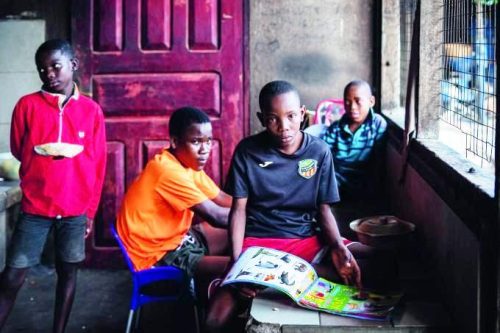
Children at the Centre. Photo: J.S.Salcedo
It all started when the Italian Comboni missionary Joe Rabbiosi founded the humanitarian organization ‘In My Father’s House’ in 2000 to carry out a series of initiatives in the Volta region, in the south-east of Ghana, to respond to some social needs, with particular attention to the most disadvantaged children. “African children are currently among the most vulnerable and exploited people in the world. The time has come for the entire human community, including Africa itself, to wake up to this unjust reality and work towards creating an environment of mutual collaboration and fair solidarity”, says Father Rabbiosi.
The 75-year-old priest has delegated responsibility for the work to two Ghanaians from villages near Abor: Frank Amenyo and Wisdom Seade. Amenyo, father of four, has had a close relationship with Father Rabbiosi since they met during a professional course when the Ghanaian was twenty years old. He was unable to finish his studies due to a heart problem that forced him to use up all his money, but the religious priest helped him complete his baccalaureate and sent him to Italy for treatment. Upon his return Amenyo, together with Father Rabbiosi, decided to found ‘In My Father’s House’.
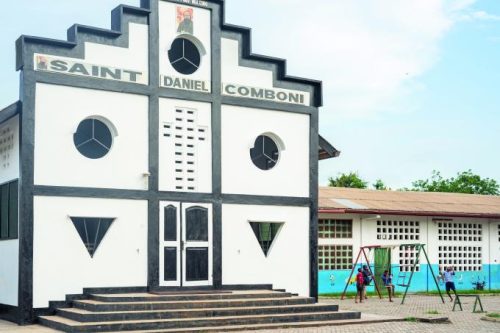
The chapel is dedicated to Saint Daniel Comboni. Photo: J.S.Salcedo
“When we started, we only had one and a half hectares of land and one building of our own. Gradually, we thought of more ambitious plans and, over time, we purchased more land. We currently have 24 hectares”, explains Amenyo.The first thing they built was a school and home for underprivileged children. Then they started a transport service in the area to allow the children to attend school. “We started the school with 17 students. Today there are 800”, Amenyo says smiling.
Amenyo manages the Centre together with Wisdom Seade, a father of two children. Ten years into the project, Wisdom is responsible for the administration, coordinates the school and teaches economics and business in secondary school. “When I heard about the work that Father Joe and Frank were doing, I joined them to help those who live without hope. Father Joe always insists that we must be a living testimony of the Gospel. When people need God, they pray.
So, to assure them that God hears them and is close to them, we must do it with projects like this”, says Wisdom.
Sharing their stories
Perhaps the most special part of ‘In My Father’s House’ is the home for those who have the most difficulties: children with disabilities, from disadvantaged families, who have lost their parents, or who have been abandoned. Amenyo says: “Every day we find ourselves dealing with emergency cases that require a response from us. This was the case of four children who had been abandoned and found almost lifeless. We took them to hospital and managed to save them and then we brought them here to the Centre. Another case was that of three children born to the same mother but to different fathers. The mother could not take care of them. They were sick and malnourished. We welcomed them and, after they had been taken to hospital and received the food they needed, they have improved significantly”.
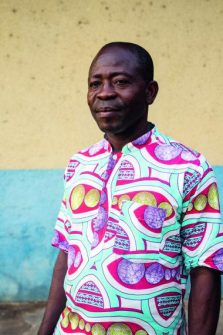
Frank Amenyo, director of the Centre. Photo: J.S.Salcedo
These children and young people with special needs live in the village with other school pupils on a residential basis, because their families live far from the city.
In total there are 120 of these children. Together with assistants and their families, they form a community of 200 people.
“Children who do not have a family to take care of them live in a close relationship with the leaders and with the children who live in the centre”, confirms Seade. “The former are very vulnerable. They go through very painful processes and some of them have psychological problems. It’s very healthy for them to mix and live together with others, telling each other their different life stories”.
The Centre encourages these children to spend their school holidays with a family chosen by the Centre so that, as far as possible,
they do not feel excluded”.
The school
Every day, around seven in the morning, the Children’s Village welcomes hundreds of pupils who arrive from home on foot or by bus. The school runs from the first years of primary school to the last years of secondary school. Families are charged as little as possible.
“We are satisfied if they help us cover a small part of the teachers’ salaries. We take care of the rest”, says Seade.
Thanks to a system of sponsorships and scholarships, students who finish school are offered the opportunity to continue with vocational training or higher education. The school also has a specific program for teacher training. Some of these students are sent to remote areas where they put what they have learned into practice. They go to impoverished and educationally neglected areas, too far from urban centres where teachers are unwilling to go”, explains Seade. “The trainees stay there for a year. First, we build a small hut to start the lessons and, if everything is OK, we build a proper school. Once it’s up and running, we hand
it over to the government”.
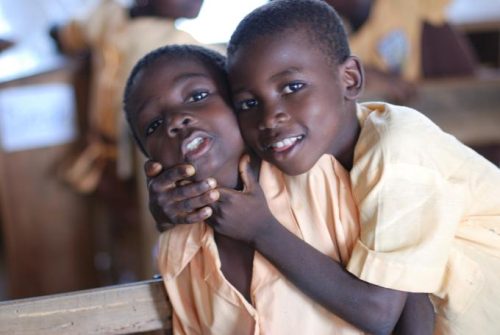
“To respond to certain social needs. Particular attention is paid to the most disadvantaged children”. File Swm
In My Father’s House has already built 75 schools in rural areas and around 400 pupils have gone through this training and are now teaching in other schools.In addition to education, In My Father’s House also has a health program through which it raises funds for operations for people with serious illnesses, such as cancer or heart problems.
From the beginning, In My Father’s House has aimed at economic self-sufficiency. Rice, cassava, corn, and beans are grown on the land surrounding the Centre. A chicken farm and a pig farm have been started. With what is produced, we feed the children of the centre and help other families in the area by giving them bags of food every month. “The ultimate goal of everything we do is for the people who pass through here to develop and become self-sufficient in life. If we can achieve this, it will have been worth it”, says Amenyo.
In the future, we want to continue to make the project increasingly autonomous. “Some of our initiatives: increase the production of our fields and farms; build accommodation facilities for rent; and use the facilities to offer new courses on weekends for those who want to broaden their academic and professional knowledge and cannot do it from Monday to Friday for work reasons. We must plan well everything we can do, also learning from other experiences”, Amenyo concludes. (Open Photo: In My Father’s House. J.S.Salcedo)
Javier Sánchez Salcedo



